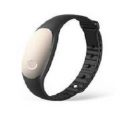PTE考生目前最大的问题之一就是练习题缺乏。除了有限的基本官方书(PLUS,Testbuilder, OG)之外
就没有题了。很多英语基础不是很扎实的同学很难找到练习材料。悉尼文波雅思PTE培训学校专门为澳洲,尤其是悉尼、墨尔本的PTE考生准备了适合PTE听力阅读练习的科学60秒。各位PTE同学可以练习PTE听力中的summarise spoken text和PTE口语中的retell lecture,PTE听力口语-科学60秒-Frosty Moss练习记笔记技巧和复述。废话少说,下面开始:
听力内容:
60秒科学节目(SSS)是科学美国人网站的一套广播栏目,英文名称:Scientific American – 60 Second Science,节目内容以科学报道为主,节目仅一分钟的时间,主要对当今的科学技术新发展作以简明、通俗的介绍,对于科学的发展如何影响人们的生活环境、健康状况及科学技术,提供了大量简明易懂的阐释。
This is Scientific American — 60-Second Science. I’m Jason Goldman.
Make a left at the big oak tree about a mile down the road. That kind of direction is common inlandscapes filled with visual cues. But the Sahara desert is a much tougher place to navigate. Even any footprints you leave get erased as winds massage the sand. Nevertheless, ants in thedesert go on searches for food—and once they find it they carry their prize directly back to thenest.
In the late 1980‘s, researchers discovered that the ants can achieve this impressive featusing a process called path integration. To gauge the direction home, they keep track of thesun’s motion across the sky—just like sailors used to do. To calculate the distance, they counttheir steps.
“It’s a very hostile environment. They’re foraging at the hottest times of the day and it’s adesert, so surface temperatures reach 60 to 70 degrees Celsius.”
Neurobiologist Matthias Wittlinger from Germany’s Ulm University, on the podcast of the journalScience, which published this work.
“And they need to be really quick in finding food, and they really need to be very quick ingetting the food back to the nest…they need to be really fast, and they’re travelling at speedsof 100 body lengths per second.”
Wittlinger noticed that sometimes desert ants carry each other.
“And here we had this unique opportunity to test traveling ants that are not walking.”
If they’re not walking, then they can’t count their steps. So would these ants be able to findtheir way home?、
Bees and wasps can’t count their steps, because they fly. Instead, to estimate distance theyrely on what’s called optic flow, which tracks how much visual information flows past themwhile they travel. So, do carried ants also use optic flow?
To find out, the researchers waited for an ant to emerge from its nest carrying another. Afterthe pair walked for ten meters, the researchers separated them. And impressively, the carriedant marched straight on back to the nest—but not if their vision was blocked.
“So if they were blindfolded while being carried, they have no chance of gaining any distanceinformation.”
Which proves that they need eyesight—and therefore optic flow—to do it.
These critters live in one of the harshest environments on the planet, so it makes sense thatevolution endowed them with the tools for path integration and optic flow.
“In the case of the desert ant, it’s really important that they’re getting navigation right…if onesystem fails, you still have a backup system.”
Because if you’re going to live in the desert you have to be very clever in finding ways to notdie in the desert.
Thanks for listening for Scientific American — 60-Second Science Science. I’m Jason Goldman.
墨尔本悉尼文波PTE原创首发
更多精彩请持续关注微信wenbo_tv2。





